Whether you want to go on a hike, learn about Native American culture, or enjoy a delicious meal, our Denver to Grand Canyon road trip has everything that you could ask for.
Both Denver and the Grand Canyon are known for their beautiful scenery, making them must-visit destinations. For this Denver to Grand Canyon road trip, we have selected a variety of cities and national parks that will allow you to see all that the West has to offer, including mountains, the desert, and charming small towns. The summer is the perfect time to go on a hike or rafting, while the winter is great if you want to hit the slopes.
Stops
1. Denver
2. Gunnison National Forest
3. Great Sand Dunes National Park
4. Durango, CO
5. Farmington, NM
6. Grand Canyon
Info at a glance
- A 1-week long trip
- Type of route: Nature
- 6 stops along the route
- 809 miles of driving
Highlights
- Shop or see a performance in Downtown Denver.
- Explore the colorful hills and sculpted rock of Farmington.
- Learn more about the historic Narrow Gauge Railroad in Durango.
- Have fun sledding in Great Sand Dunes National Park.
- Witness the breathtaking views of the Grand Canyon.
Getting to the start
This road trip starts in Denver, Colorado. If you’re visiting from a different part of the country, you can fly into Denver International Airport and rent a car directly from here. If you’ll already have your own vehicle for your Denver to Grand Canyon road trip, there are a few highways you can use to get to the city. Interstate 25 is convenient when coming from the north or south, while I-70 is best if you’re arriving from the east or west. You can also take an Amtrak train into Denver.
When to Visit
While a Denver to Grand Canyon road trip is fun year-round, it’s often best to go during the summer months, as you can maximize your time outdoors. If you drive between May and October, you’ll typically have beautiful weather and a majority of attractions will be open. You will want to pack plenty of layers, as it may still be cold at night, particularly in the desert. Swimsuits, towels, comfortable walking shoes and sunscreen will also come in handy.
Driving tips
For your Denver to Grand Canyon road trip, you will drive through Arizona, Colorado and New Mexico. Most interstates have a speed limit of 65 miles per hour, while highways have a limit of 55 mph. Some of the areas that you will be driving through are mountainous, so always be cautious with your speed. Arizona and Colorado do not have toll roads, but New Mexico does. Each state has standard traffic regulations, so focus on driving safely and attentively.
What to know about the route
This Denver to Grand Canyon road trip spans approximately 650 miles and will take you through some of the most impressive natural highlights of the United States. You will start in the Mile High City, where you will take US Hwy 285 S to go to Gunnison National Forest. From here, you will hop on CO Hwy114 E to go to Great Sand Dunes National Park. Your next stop will be the charming town of Durango, Colorado, which can be reached by taking the US Hwy160 E. After Durango, you will get on CO Hwy140 and NM Hwy 170 to go to your next destination of Farmington, New Mexico, where you can spend a day or two exploring this city’s historic Native American ruins. The next stop is also your final destination, which is the famous Grand Canyon. To get here, you will take US Hwy 160 W. Whether you want to go on a hike, enjoy a helicopter ride or try white water rafting, you’ll never run out of things to do here. It can be convenient to rent an SUV for this trip in order to have space for all of your recreational equipment.
Denver, CO
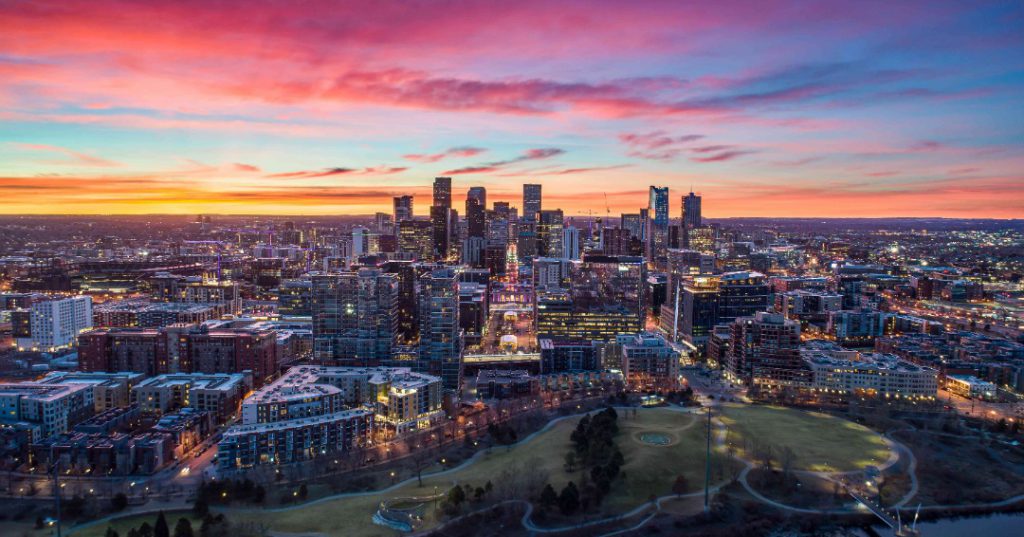
Famous for being the capital of Colorado, Denver has many sights and attractions for all types of travelers. Between its impressive scenery, rich culture and delicious restaurants, you’ll never run out of things to see and do. The city’s downtown is filled with music venues and craft breweries and there are many hiking and skiing opportunities in the area.
Points of interest
Spend a few hours exploring the Denver Art Museum, which is filled with global collections from all over the world. You can also visit the Denver Botanic Gardens, which span 23 acres. When visiting during the warmer months, head to Elitch Gardens, an outdoor waterpark that also has rollercoasters.
Where to eat, drink and sleep
Grab a burger during your trip, such as at 5280 Burger Bar and Highland Tap and Burger. Denver is also famous for craft beer, so treat yourself to a pint at the Great Divide Brewing Co or Spangalang Brewery. For lodging, you can choose from a variety of affordable motels and stylish boutique hotels, like the Kimpton Hotel Monaco Denver.
Sixt Insider Tip
For an experience that the entire family will enjoy, go to Dinosaur Ridge, which is a famous fossil site that has its own visitor center and is great for learning about paleontology. It also has a few on-site interactive exhibits and activities that will keep kids of all ages entertained during your visit.
From Denver to Gunnison National Forest (200 miles)
Your next stop will be Gunnison National Forest. To go here, you’ll take US Hwy 285 S, which will bring you out of the city and through a series of small towns, including Bailey, Jefferson and Nathrop. If you need to stretch your legs or refuel, you can stop in one of these locations.
Gunnison National Forest
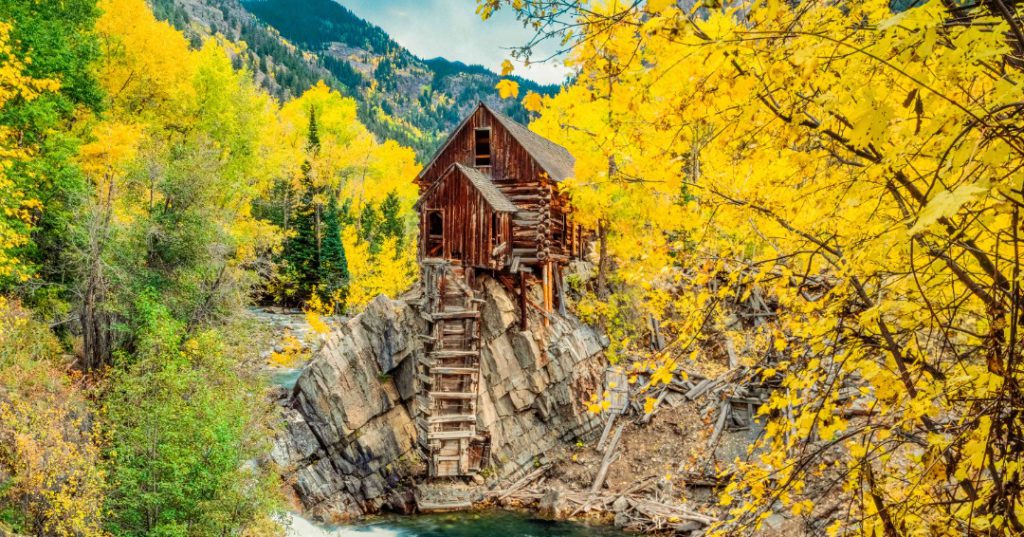
Known for its beautiful natural scenery and numerous recreational activities, Gunnison National Forest is a great place to stop if you want to spend some time outdoors. Whether you enjoy bike riding, fishing, hiking, climbing or horseback riding, there is an activity for you that is available in this area.
Sixt Insider Tip
As Gunnison National Forest is such a large area of land, it is split into different regions, with certain recreational activities only being allowed in specific areas. Before embarking on a bike ride or something similar, make sure to check on a map or with a park ranger to ensure that you are in an acceptable area for your sport.
From Gunnison National Forest to Great Sand Dunes National Park (138 miles)
To head to your next destination of Great Sand Dunes National Park, you will jump on CO Hwy 114 E. If you’re hoping to stop somewhere along the way, you can always take a detour to Sawtooth Mountain, which has some of the best hiking and climbing trails in the state of Colorado.
Great Sand Dunes National Park
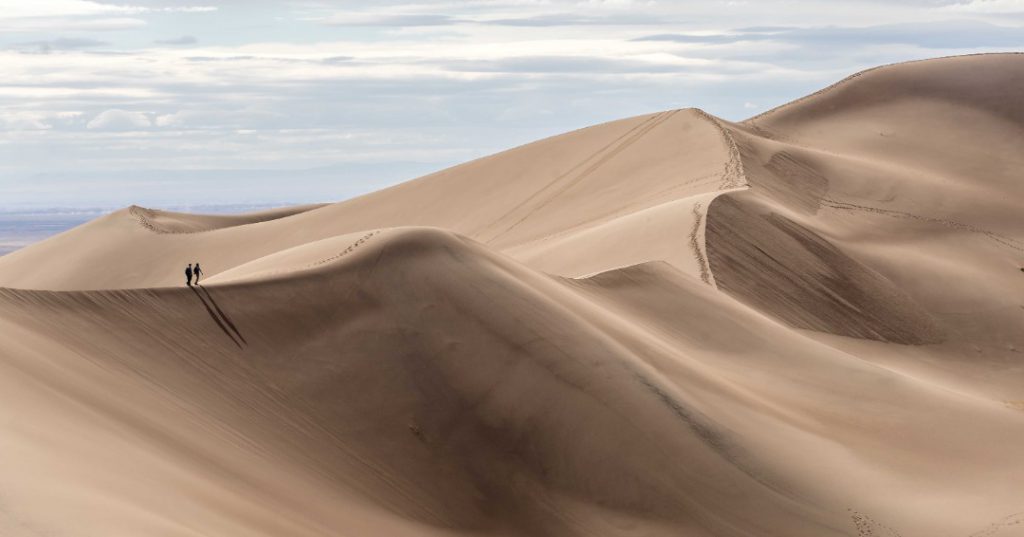
Encompassing almost 150,000 acres, Great Sand Dunes National Park is an impressive preserve that is filled with scenic dunes and recreational opportunities. Perfect for horseback riding, sledding and off-roading, you’ll want to make sure that you spend as much time as you can in the park during your road trip.
Points of interest
The Mosca Pass Trail should be one of the top sights on your to-do list, as it follows a small creek through evergreen forests and provides beautiful views of the surrounding area. You can also take Medano Pass Road to head to Medano Lake, which has a selection of trails for you to choose from.
Sixt Insider Tip
While the area is very popular for hiking, keep in mind that the sand can become quite hot during summer, so make sure to wear protective clothing and shoes to help prevent yourself from being burned. As an alternative, you can always rent a sandboard or sand sled from just outside of the park’s entrance.
From Great Sand Dunes National Park to Durango (165 miles)
As you leave Great Sand Dunes National Park, you will get on US Hwy 160 E to go to your next stop, Durango, Colorado. There are a few different places where you can stop along the way, such as the Monte Vista National Wildlife Refuge, a large bird sanctuary that has many walking trails.
Durango, CO
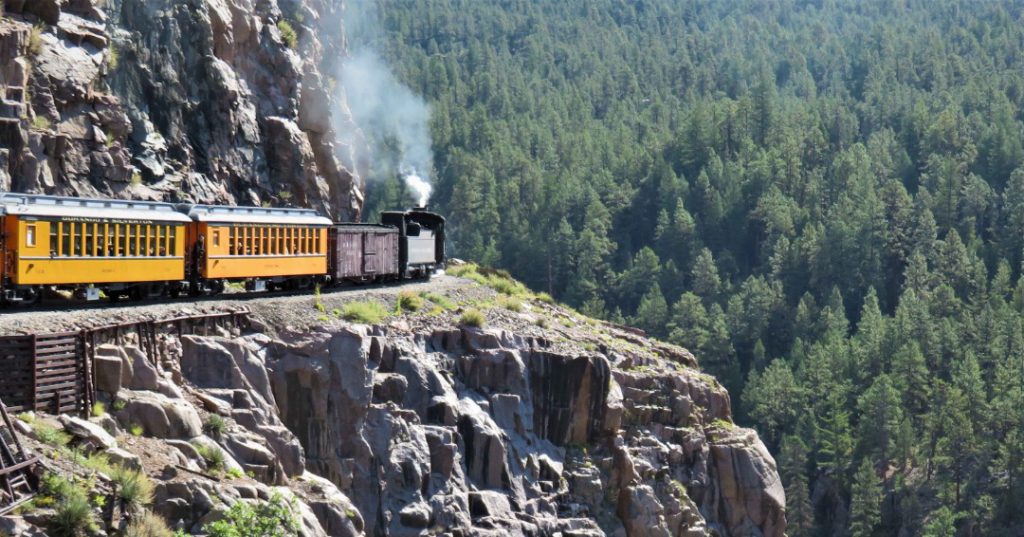
A charming town located in southwestern Colorado, Durango is famous for its railroad history and scenic landscapes. The city’s downtown has many interesting museums for you to visit, while the surrounding area is great for hiking and mountain biking. Depending on the time of year, you may be lucky enough to go to a music or beer festival.
Points of interest
Durango is home to The Powerhouse – Science Center/MakerLab, which has a variety of energy-related exhibits. To learn about local history, you can also go to the Animas Museum, which is located in an old schoolhouse. Those interested in archaeology won’t want to miss out on going to Mesa Verde National Park, where you can see ancient cliff dwellings.
Where to eat, drink and sleep
If you’re interested in grabbing a bite to eat at a local restaurant, there are many to choose from, including the Dandelion Cafe and James Ranch Grill. Durango is also known for its craft beers and has breweries like Bottom Shelf Brewery and Carver Brewing Company. There are many charming lodging options to choose from, including the Blue Lake Ranch.
Sixt Insider Tip
During your stay in the area, make sure to take a ride along the Durango & Silverton Narrow Gauge Railroad, as it’s a great way to enjoy the region’s beautiful scenery while learning more about the town’s unique railroad history.
From Durango to Farmington (51 miles)
After visiting Durango, your next stop will be Farmington. You will hop on CO Hwy 140 and NM Hwy 170 to head here, which will take you by several charming towns, like Red Mesa and La Plata. You can also make a stop at the nearby Aztec Ruins National Monument, which has a museum and a trail that connects a variety of different ceremonial structures.
Farmington, NM
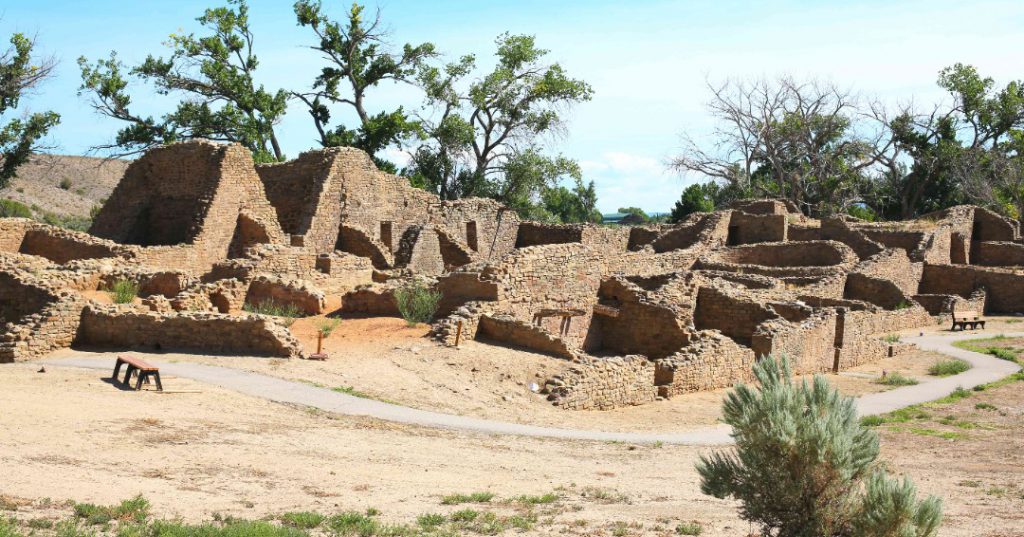
Located in the heart of the Four Corners region, Farmington is a cozy town near six national parks, like Aztec Ruins National Monument, and has thousands of acres that are home to recreational opportunities. Outdoor lovers will enjoy the fishing, hiking, and biking opportunities, while culture enthusiasts will want to visit some of the many ruins and monuments that can be found in the area.
Points of interest
Learn more about the unique local heritage by spending a few hours at the Farmington Museum, or get up close and personal with Native American culture by visiting the Salmon Ruins Museum. If you want to see some of the region’s wildlife, you can always go to the Riverside Nature Center, which has several exhibits and public programs.
Where to eat, drink and sleep
Farmington is known for its unique New Mexican cuisine, which you can enjoy at a few different local eateries, like Fiesta Mexicana and Chile Pod. There are many breweries in the area, including Lauter Haus Brewing Company and the Three Rivers Brewstillery Lounge. Consider staying at one of the town’s charming hotels, such as the Silver River Adobe Inn.
Sixt Insider Tip
If you’ll be visiting during a time when there is warm weather, make sure to go to Farmington Lake, as this is a great area for a variety of different recreational activities, including kayaking, boating and fishing.
From Farmington to the Grand Canyon (255 miles)
Your next stop after Farmington will be your destination, the Grand Canyon. To get here, you will take US Highway 160 W that will take you by cities like Red Mesa and Cameron, both of which are great places to stop during your road trip.
Grand Canyon
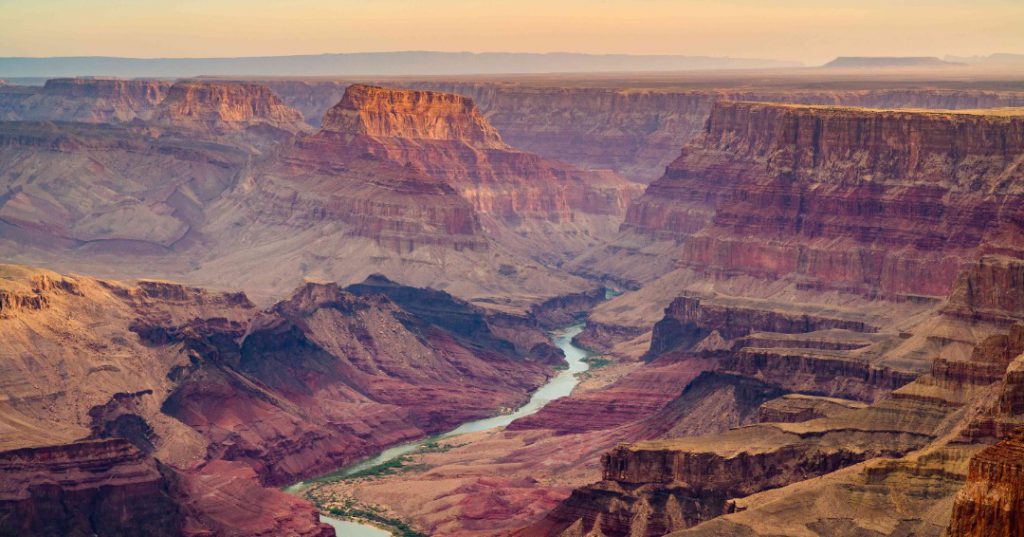
Grand Canyon National Park encompasses 277 miles, which include beautifully layered bands of colorful rock, as well as parts of the Colorado River. Open 24 hours a day, this park is a must-see during your lifetime. With hiking, horseback riding and rafting opportunities, it has recreational activities for everyone, no matter the time of the year that you’ll be visiting.
Points of interest
To have scenic views of the canyon, make sure to visit Hermit Road, which has nine designated viewpoints that can be reached by shuttle bus. If you would like to hike, you can take the Canyon Rim Trail, which allows for short or long walks on both paved and dirt roads.
Where to eat, drink and sleep
There are a few different restaurants for you to choose from that are inside of the park, such as the Bright Angel Bicycle Rental and Café, as well as the Delicatessen at the Marketplace that is in Market Plaza. You can also choose from a few charming lodging options, including the Bright Angel Lodge and the El Tovar Hotel.
Sixt Insider Tip
For a unique experience, consider taking a mule trip along one of the canyon’s many trails, as this will allow you to have views of the park that you otherwise wouldn’t have access to.